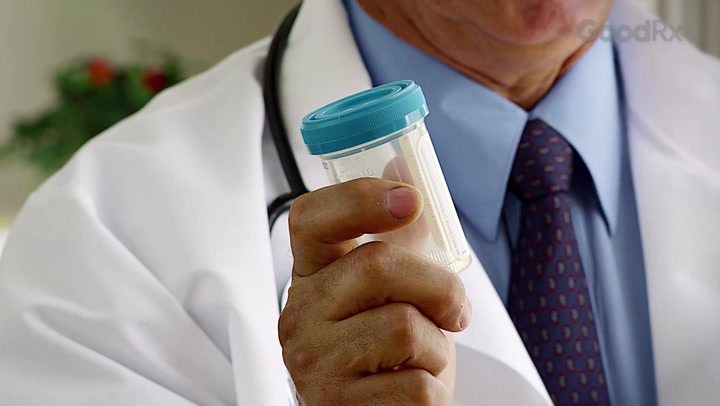
Benefits and Risks of Cannabis Use
Key takeaways:
Cannabis is a naturally growing plant that affects the body and mind in many different ways.
There’s now plenty of research showing that cannabis can be a useful therapy for many different types of illnesses.
Like all medical treatments, cannabis has risks and side effects.
Cannabis research is growing rapidly, so the medical community is still learning a lot about both the benefits and risks of cannabis use.
Table of contents
Cannabis legalization has resulted in a large increase in the use of cannabis for personal and health reasons. In fact, about 3 in 4 people in the U.S. have legal access to medical cannabis, and more than half can use it for personal (recreational) use.
The antidrug campaign of the past several decades has emphasized the potential harms of cannabis without acknowledging its medicinal properties. There are indeed genuine side effects and risks of cannabis use, but it’s important to weigh these risks against the studied benefits.
In order to make informed decisions about whether cannabis is right for you, it’s important to understand its active ingredients and how they activate the body and brain.
Wise use cannabis for pain
THC gummies made for quick relief. Clinician-led guidance always included. Use code TRYEO to get 10% off.


Must be 21 years or older to purchase. Cannabis is not recommended for women who are pregnant or nursing or those who are suffering from bipolar disorder or schizophrenia. Cannabis use may increase risk of falls. Always consult with your doctor before beginning any new medical treatment.
What is cannabis?
The cannabis plant is unique because it produces a family of chemicals called cannabinoids. These chemicals all have a similar 3D shape. But subtle differences in the shape of these chemicals can have a big impact on how they make you feel.
The two most common cannabinoids are tetrahydrocannabinol (THC) and cannabidiol (CBD). Cannabis plants that produce mind-altering effects are typically high in THC. And cannabis plants with high CBD (and little or no THC) are legally defined as hemp.
THC is what causes a “high” and is responsible for most of the mind-altering effects of cannabis. THC has been found to affect regions of the brain associated with thinking, planning, pain, bodily movements, learning, and emotions.
CBD, on the other hand, doesn’t have psychoactive effects, but it may have health benefits. How cannabis makes you feel usually depends on the ratio of THC and CBD in the strain of cannabis you’re using.
What’s the endocannabinoid system?
You might be asking yourself how a naturally growing plant can affect your body in so many ways. The answer is the endocannabinoid system. This is an entire system your body has developed to regulate your health. Its primary tasks are to regulate your appetite, memory, and immune system, and to help you manage your sleep cycle and stress levels.
Cannabis works by tapping into the endocannabinoid system. This happens because THC molecules from cannabis can actually bind to receptors belonging to the endocannabinoid system. What this means is that when you use cannabis, your endocannabinoid system gets activated. And when the endocannabinoid system gets turned on, you feel the effects of cannabis.
Read more like this
Explore these related articles, suggested for readers like you.
What are the health benefits of cannabis?
Human research for all the benefits of cannabis is still ongoing. Here are some of the most well-studied benefits of cannabis.
1. Pain relief
One of the most common reasons people use medical cannabis is to manage pain. A 2022 review of the evidence shows that cannabis use can be effective in treating chronic pain.
Research also suggests that cannabis could be a safer choice compared to other pain-relieving medications such as opioids and benzodiazepines. This is because its side effects are not life-threatening. Opioids and benzodiazepines, on the other hand, cause thousands of accidental drug overdoses and deaths every year.
2. Sleep
Lots of studies show that people who use cannabis have better sleep quality, less sleep disturbances, and have a decreased amount of time before they fall asleep at night. Both people with and without chronic diseases report that cannabis improves their sleep.
Although research is still ongoing, cannabis could also be helpful for people with sleep disorders such as restless leg syndrome.
3. Mental health
A recent review of the literature shows that CBD is an effective treatment for generalized anxiety disorder, panic disorder, social anxiety disorder, obsessive-compulsive disorder (OCD), and post-traumatic stress disorder (PTSD). One study showed that people with social anxiety performed better on a mock public speaking simulation after taking CBD.
It should be noted, though, that long-term studies on using cannabis for mental health issues haven’t been performed. This means that it’s not clear if the benefits researchers are seeing for mental health will last over time. And keep in mind that cannabis use can increase the risk of mental health issues or worsen existing mental health symptoms.
4. Epilepsy
There’s very high-quality research showing that pharmaceutical-grade CBD is effective in treating epilepsy. An oral form of CBD known as Epidiolex is FDA-approved and currently available to treat some forms of epilepsy.
It’s important to note that this research has only been performed on very rare forms of epilepsy (Lennox-Gastaut syndrome and Dravet syndrome). Scientists aren’t sure if CBD is also useful on more common forms of epilepsy or other seizure disorders.
5. Nausea, vomiting, and low appetite
Research shows that cannabis can help with nausea, vomiting, and low appetite. One study showed that people who experienced nausea and vomiting from chemotherapy had significant symptom relief with cannabis use.
Another study showed that cannabis helped improve low appetite and weight loss in people living with HIV. Synthetic cannabis medications known as nabilone (Cesamet) and dronabinol (Marinol) are FDA-approved and currently available for these symptoms.
6. Neurological conditions, multiple sclerosis, and Tourette syndrome
A systematic review of cannabis for neurological disorders found that cannabis is effective in controlling symptoms of multiple sclerosis. Another study found that cannabis is effective in controlling tics that are the result of Tourette syndrome. Research is ongoing, but some studies suggest that cannabis may also help neurodegenerative diseases like Parkinson’s and Alzheimer’s.
One common finding among many of these studies is that although cannabis may not always treat the main symptoms of a disease, it seems to improve a person’s quality of life. People use cannabis to treat many other health ailments, such as autoimmune and inflammatory diseases. More research is needed to understand how effective cannabis is for these conditions.
What are the health risks of cannabis use?
All medicines have benefits as well as side effects. Cannabis is no different. As researchers find more and more benefits of cannabis use, they’re also discovering more risks as well. Here are some of the risks of cannabis use.
It can affect your coordination and thinking
Cannabis is well known to impair body coordination and driving. It also impairs thinking and decision-making. Long-term cannabis use has been associated with memory and attention problems, even while people are not under the influence of THC. These impairments could negatively affect work or school performance.
It can interact with other medications
The molecules in cannabis may interact with certain types of medications. Many prescription medications are broken down by the liver, and both THC and CBD can interfere with this process.
If you’re taking any medications with a “grapefruit warning” on the label, consider this also a “cannabis warning” since they can both affect the same enzyme and medication levels. Be sure to talk with your primary care provider about your cannabis use. You may need to have closer monitoring or have your medications adjusted.
It can impact teens’ mental development
Certain vulnerable populations, such as adolescents, should be very wary of cannabis and avoid it altogether. Decades of research have shown that cannabis interferes with brain development. This is why it’s important to wait to use cannabis until at least age 21.
Cannabis use at an early age has also been linked with an increased risk for psychosis and other mental health problems.
It’s harmful if you’re pregnant or breastfeeding
Both pregnant and nursing mothers are advised to avoid cannabis, due to long-lasting mental and emotional effects on their children. THC has been linked with low-birth weight, which may be related to how cannabis affects the placenta.
Also, THC remains in the human body for a long time after cannabis is consumed, especially when people consume cannabis orally (edibles or beverages). Because THC easily passes into breast milk, it’s safest to avoid all forms of cannabis consumption while breastfeeding.
It can be addictive
Cannabis can be addictive, and THC is primarily responsible for its rewarding or addictive potential. Like many natural behaviors and other substances (sex, gambling, sugar, and nicotine, for example), cannabis can be used excessively with negative consequences.
Surveys conducted prior to the recent wave of cannabis legalization suggest that up to 3 in 10 people who use cannabis will develop a substance use disorder. However, a 2020 study of Canadian recreational cannabis users found that only 2% of people ever seek professional help for a cannabis problem. Additional long-term studies are needed to understand the true risk of developing cannabis use disorder.
Interestingly, it used to be thought that cannabis could be a “gateway drug.” In other words, people used to think that if you used cannabis, it could make it more likely that you would use other, more dangerous drugs next. There hasn’t been any convincing evidence to show that this is actually true. In fact, according to some studies, legalizing marijuana could actually lead to lower rates of usage of other drugs.
If you think you may be addicted to cannabis, or any other substance, it’s important to reach out to a healthcare professional or a trusted person for help and support.
It can cause physical and mental problems, if used excessively
A rising concern among healthcare professionals is cannabinoid hyperemesis syndrome (CHS). CHS is a condition where excessive cannabis use causes people to experience cycles of nausea and vomiting. Because cannabis has long been used to treat nausea, people often consume more, making matters worse.
Cannabis use has also been found to be associated with an increased risk of heart attack and stroke. Any amount of cannabis use increases your risk, but your risk goes up the more you smoke. This means that if you smoke cannabis daily, you have an even higher risk for heart attack and stroke than if you just smoke it every once in a while.
In general, the greatest risks of cannabis use happen with heavy cannabis use and large amounts of THC. In fact, inhaling highly concentrated THC (known as dabbing) has caused some people to experience psychotic symptoms, such as extreme paranoia and self-harm. Cannabis use can also worsen the symptoms of bipolar disorder.
It can create legal challenges for people
Cannabis use can sometimes make housing, employment, and healthcare more complicated. Because of federal cannabis laws, people may be denied housing or some forms of public assistance if they use cannabis.
It has short-term side effects
A common theme in many cannabis studies is that a lot of the participants drop out before the study is completed. This is because despite the many benefits of cannabis, cannabis also has a lot of short-term side effects, including:
Dry eyes
Dry mouth
Dizziness
Reduced body temperature
Faster heart rate
These symptoms are short-lived and usually not dangerous, but lots of people don’t like the way it makes them feel.
Also, because cannabis has so many effects on the body, some people might actually experience what might be considered a benefit of cannabis as an unwanted side effect. For example, cannabis stimulates appetite, sometimes referred to as “the munchies.” This side effect can actually be helpful for people with cancer who have low appetite. But people who take cannabis for another reason might not like that it also makes them feel hungry.
How to decide if cannabis is right for you
People respond differently to cannabis, and the best way to know if it might help your symptoms is to discuss it with a healthcare professional and consider trying a small amount in a safe, responsibility-free environment. It can be helpful to keep a journal to track what you consumed, and how it made you feel. Be prepared to feel some side effects.
Teens, pregnant and nursing mothers, and people with personal or a family history of serious mental health conditions should avoid cannabis. Similarly, if you have a history of problematic substance use or addiction, you may be particularly sensitive to the addictive effects of cannabis. Also, because it can interact with certain medications, it’s important to discuss cannabis use with your healthcare professional.
The bottom line
Cannabis use has many benefits and has been shown to help treat pain, insomnia, anxiety, and even epilepsy. Many people report that their quality of life is greatly improved by cannabis. However, cannabis use is not a risk-free activity, and each person should carefully balance their own unique benefits and risks, and discuss it with a healthcare professional.
Why trust our experts?



References
Balash, Y., et al. (2017). Medical cannabis in Parkinson disease: Real-life patients’ experience. Clinical Neuropharmacology.
Bechtel, S., et al. (2021). Assessment of neuropsychological impairments in regular cannabis users. Encephale.
Bergamaschi, M. M., et al. (2011). Cannabidiol reduces the anxiety induced by simulated public speaking in treatment-naïve social phobia patients. Neuropsychopharmacology.
Blessing, E. M., et al. (2015). Cannabidiol as a potential treatment for anxiety disorders. Neurotherapeutics.
Centers for Disease Control and Prevention. (2024). Provisional drug overdose death counts.
Chapekis, A., et al. (2024). Most Americans now live in a legal marijuana state – and most have at least one dispensary in their county. Pew Research Center.
Cobb Scott, J., et al. (2023). Impact of adolescent cannabis use on neurocognitive and brain development. Child and Adolescent Psychiatric Clinics of North America.
Cuttler, C., et al. (2021). Acute effects of high‑potency cannabis flower and cannabis concentrates on everyday life memory and decision making. Scientific Reports.
DeJesus, E., et al. (2007). Use of dronabinol improves appetite and reverses weight loss in HIV/AIDS-infected patients. Journal of the International Association of Physicians in AIDS Care.
Doohan, P. T., et al. (2021). Cannabinoid interactions with cytochrome P450 drug metabolism: A full-spectrum characterization. The AAPS Journal.
Drug Policy Alliance. (n.d.). A brief history of the drug war.
Feingold, D., et al. (2020). Probability and correlates of transition from cannabis use to DSM-5 cannabis use disorder: Results from a large-scale nationally representative study. Drug and Alcohol Review.
Ghorayeb, I. (2021). Cannabis for restless legs syndrome. Advances in Experimental Medicine and Biology.
Gruber, S. A., et al. (2018). The grass might be greener: Medical marijuana patients exhibit altered brain activity and improved executive function after 3 months of treatment. Frontiers in Pharmacology.
Ho, C., et al. (2019). Nabilone for the treatment of nausea and vomiting or anorexia: A review of clinical effectiveness and guidelines. Canadian Agency for Drugs and Technologies in Health.
Howard, D. S., et al. (2019). Cannabis use based on urine drug screens in pregnancy and its association with infant birth weight. Journal of Addiction Medicine.
Jeffers, A. M., et al. (2024). Association of cannabis use with cardiovascular outcomes among US Adults. Journal of the American Heart Association.
Karschner, E. L., et al. (2010). Plasma cannabinoid pharmacokinetics following controlled oral delta9-tetrahydrocannabinol and oromucosal cannabis extract administration. Clinical Chemistry.
Koppel, B. S., et al. (2014). Systematic review: Efficacy and safety of medical marijuana in selected neurologic disorders: Report of the guideline development subcommittee of the American Academy of Neurology. Neurology.
Koppel, B. S., et al. (2015). Cannabis in the treatment of dystonia, dyskinesias, and tics. Neurotherapeutics.
Li, H., et al. (2020). Overview of cannabidiol (CBD) and its analogues: Structures, biological activities, and neuroprotective mechanisms in epilepsy and Alzheimer's disease. European Journal of Medicinal Chemistry.
Lu, H. C., et al. (2017). An introduction to the endogenous cannabinoid system. Biological Psychiatry.
Maia, J., et al. (2020). Impact of tetrahydrocannabinol on the endocannabinoid 2-arachidonoylglycerol metabolism: ABHD6 and ABHD12 as novel players in human placenta. Molecular and Cell Biology of Lipids.
McDonagh, M. S., et al. (2022). Cannabis-based products for chronic pain: A systematic review. Annals of Internal Medicine.
McDonald, A. J., et al. (2024). Age-dependent association of cannabis use with risk of psychotic disorder. Psychological Medicine.
Marijuana Policy Project. (2022). Medical cannabis laws and anti-discrimination provisions.
Nashed, M. G., et al. (2020). Prenatal cannabinoid exposure: Emerging evidence of physiological and neuropsychiatric abnormalities. Frontiers in Psychiatry.
National Academies of Sciences, Engineering, and Medicine, et al. (2017). Mental health. The Health Effects of Cannabis and Cannabinoids: The Current State of Evidence and Recommendations for Research.
National Apartment Association. (2018). How to handle medical marijuana and fair housing.
National Center for Complementary and Integrative Health. (2019). Cannabis (marijuana) and cannabinoids: What you need to know.
Pierre, J. M., et al. (2016). Cannabis-induced psychosis associated with high potency “wax dabs.” Schizophrenia Research.
Powell, D., et al. (2015). Do medical marijuana laws reduce addictions and deaths related to pain killers? National Bureau of Economic Research.
Schlienz, N. J., et al. (2020). A cross-sectional and prospective comparison of medicinal cannabis users and controls on self-reported health. Cannabis and Cannabinoid Research.
Sempio, C., et al. (2021). Detection of cannabinoids by LC-MS-MS and ELISA in breast milk. Journal of Analytical Toxicology.
Smith, L. A., et al. (2015). Cannabinoids for nausea and vomiting in adults with cancer receiving chemotherapy. The Cochrane Database of Systematic Reviews.
Takakuwa, K. M., et al. (2020). A survey on the effect that medical cannabis has on prescription opioid medication usage for the treatment of chronic pain at three medical cannabis practice sites. Cureus.
von Wrede, R., et al. (2021). Cannabidiol in the treatment of epilepsy. Clinical Drug Investigation.
Zorilla, I., et al. (2014). Cannabis and bipolar disorder: Does quitting cannabis use during manic/mixed episode improve clinical/functional outcomes? Acta Psychiatrica Scandinavica.
Keep in mind that cannabis is legal in some states for personal and/or medicinal use, but not in others. Cannabis is still illegal under federal law.





























